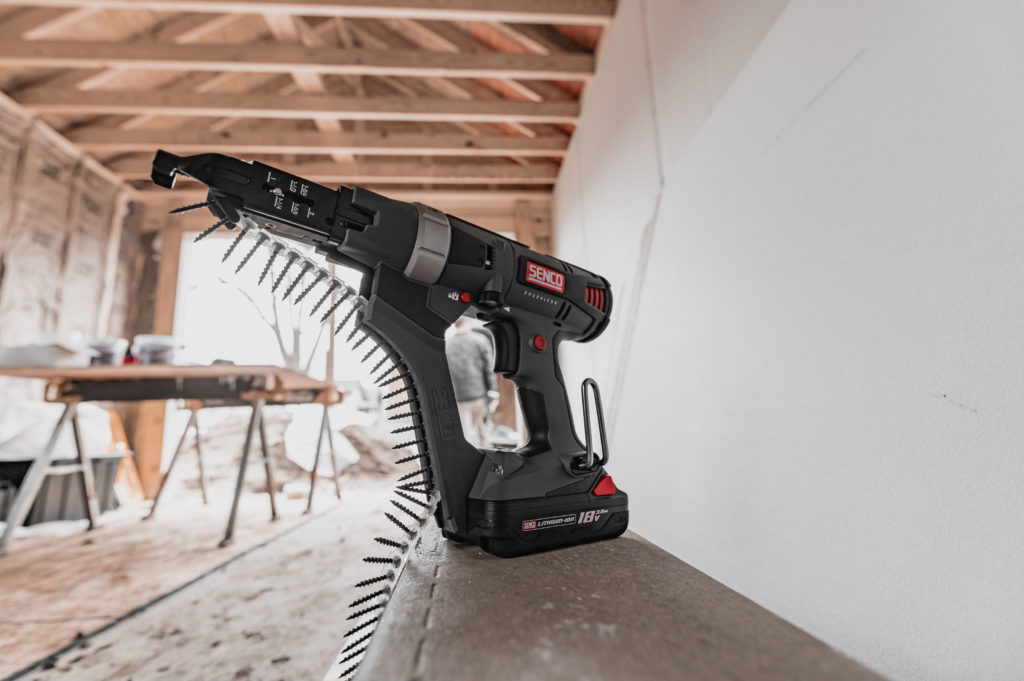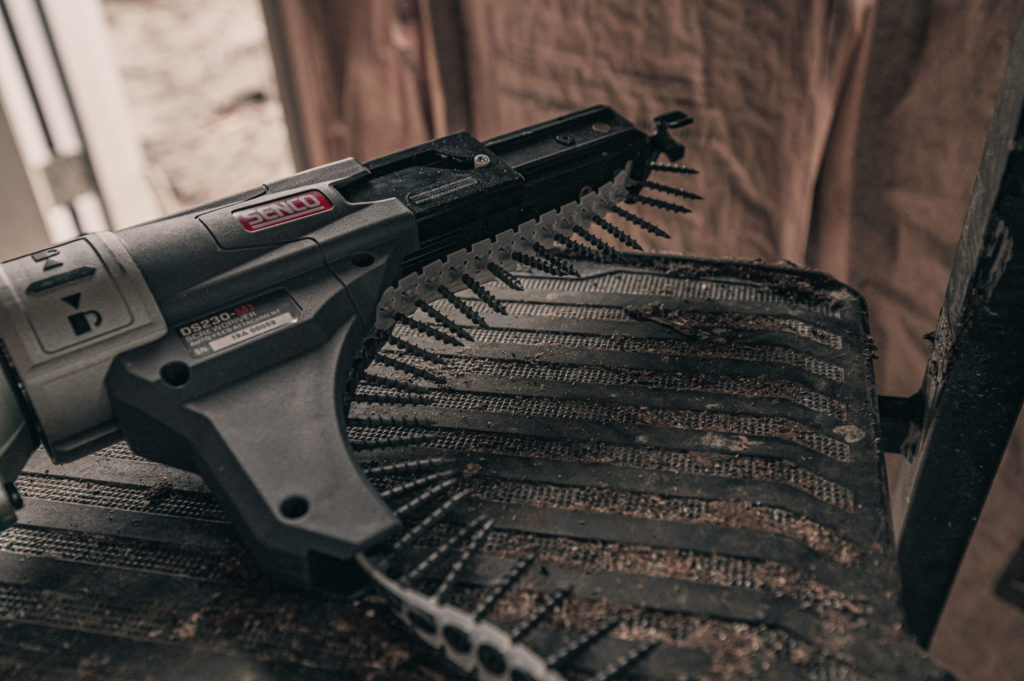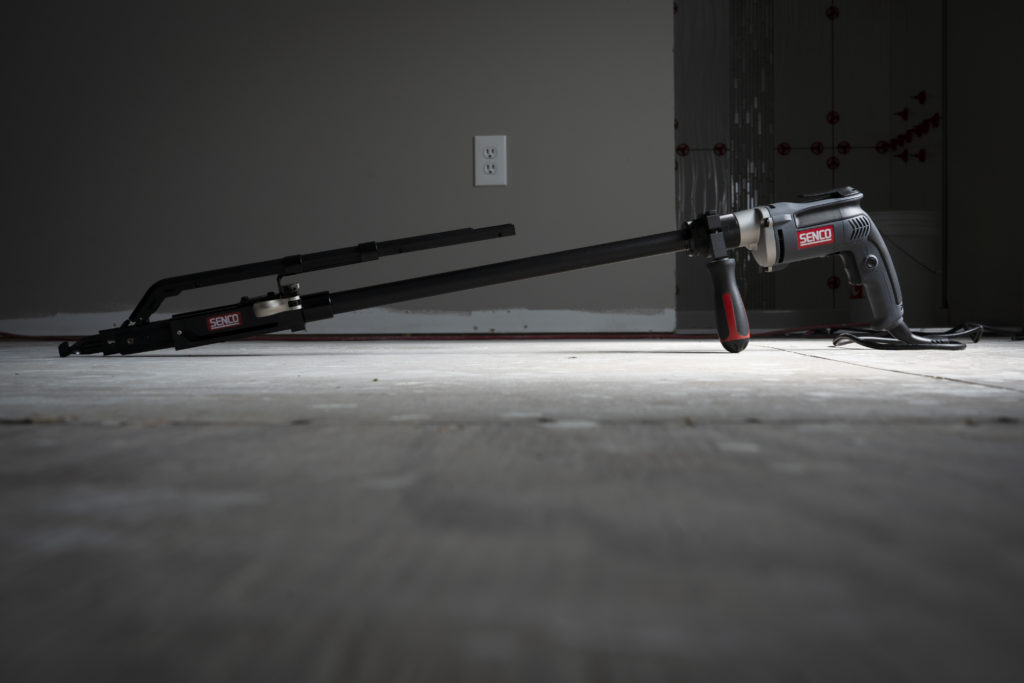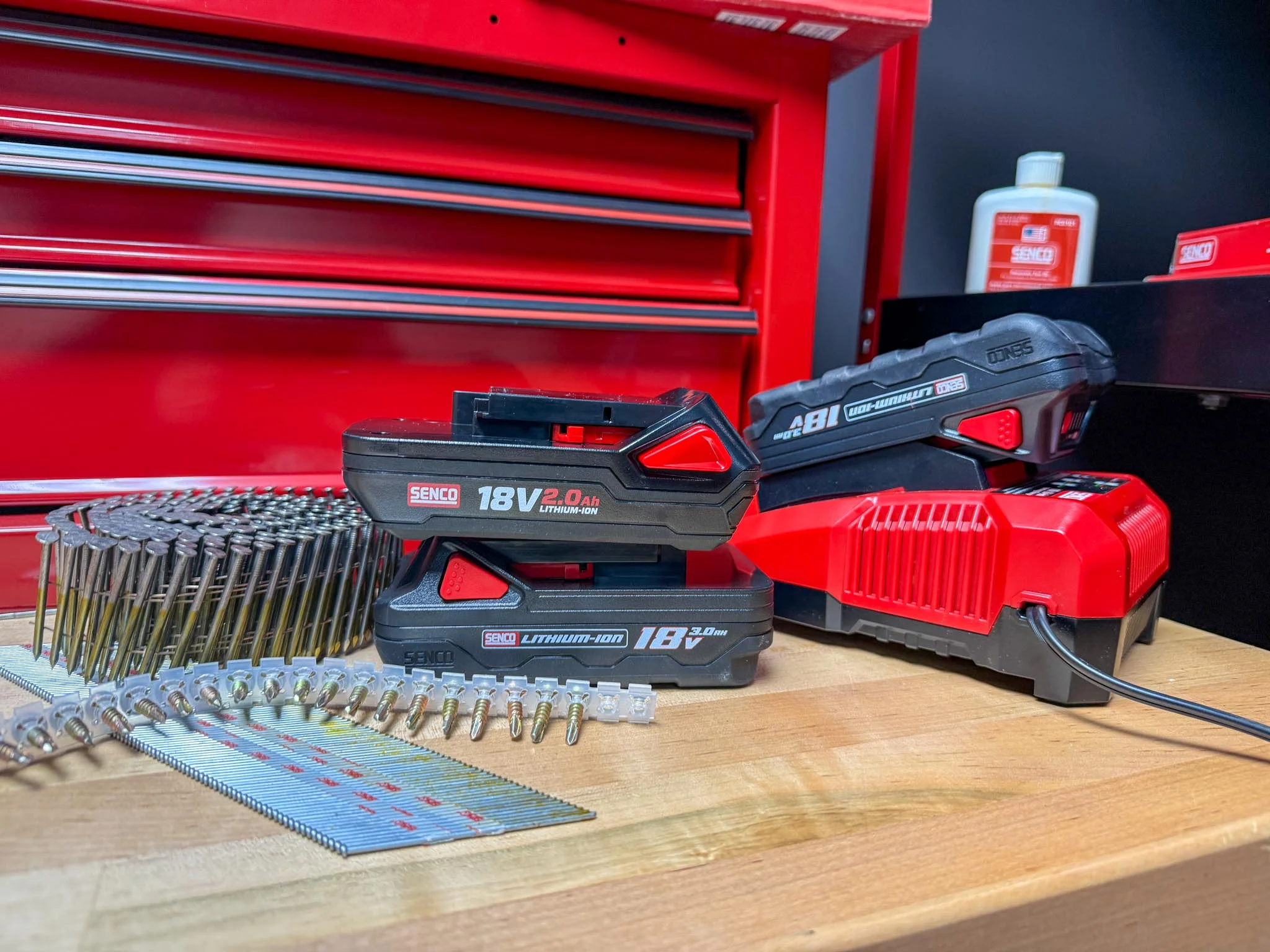What Type of Collated Screwdriver Do I Need?

How to find the best auto-feed screw gun for you.
Auto-feed screwdrivers are quickly becoming a go-to tool for all types of jobs, from drywall and subfloor to fencing, decking and truss building. No matter how fast you are with a traditional driver and loose screws, you can get the job done faster and more efficiently with a collated screwdriver.
How do you know which is right for you? It’s not an easy choice — auto-feed screwdrivers are suited to multiple jobs, but some excel in one area more than another. Additionally, there are many models and features to choose from that impact performance and tool life.
Regardless of your job and preferences, SENCO’s DURASPIN auto-feed screwdrivers offer a wide range of choices and best-in-class features. Browse all DURASPIN tools online.
CORDLESS
Pros: Portable; versatile; feature-rich
Cons: More costly than corded; requires battery management
Cordless auto-feed screwdrivers are generally preferred by professional contractors. The ability to carry them anywhere without dragging cords across the jobsite is worth the investment associated with making sure you have plenty of charged batteries on hand. Cordless tools are crucial on new builds and jobs with limited power outlets.
CORDED
Pros: Affordable; consistent power
Cons: Requires on-site power; may lack some features found in cordless models
Most crews may have gone cordless, but there’s something to be said for the simplicity of a corded driver. No swapping and charging batteries, no hunting for the right charger — corded auto-feed drivers are still preferred in industrial settings, assembly lines, and in workshops where power outlets are abundant. They are also a great low-cost choice for projects and remodels that require a lot of screws but the tool won’t be used on a daily basis.
ATTACHMENTS
Pros: Affordable; fit popular screwdriver brands; fit corded and cordless drivers
Cons: Driver sold separately; compatibility varies
When you want all the features of a collated screwdriver without switching brands or battery platforms, attachments are the best choice. A good auto-feed attachment like SENCO’s will work with popular brands and on multiple models of driver — however, if you don’t already have a compatible driver, you’ll have to buy one, which can drive up the total cost. Attachments can work with both corded and cordless tools.
STAND-UP
Pros: Reduces strain; many options to consider
Cons: Less versatility
Stand-up drivers are the go-to tools for attaching subfloor, decking and any job that would otherwise require a lot of crouching and bending. There are many types of stand-up collated screwdrivers — some, like SENCO’s, can be used with or without the stand-up extension. The ability to use the driver as a handheld tool or a stand-up tool increases versatility compared to an all-in-one unit.
Browse SENCO Stand-Up Drivers and Attachments
FEATURES TO CONSIDER
Once you decide what type of tool you need, you’ll want to focus on features, such as:
Removable Feed System
Typically, auto-feed screwdrivers include a feed system that slots over the drive bit. In case of a misplaced screw or incomplete sink, you may need to remove the feed system to touch up your work. All SENCO cordless drivers and attachments include an easily removable feed system, allowing you to back out screws without switching tools.
Narrow Nose Piece
Most collated screwdrivers don’t fit in corners or other tight and narrow spaces, requiring you to keep another, more maneuverable driver on hand. Additionally, bulky feed systems block your line of sight, a major issue on jobs that require precise screw placement. All DURASPIN tools feature SENCO’s Corner-Fit Feed System, which allows you to screw into corners and tight places other auto-feed drivers can’t reach.
Adjustable Screw Length
Most collated screws come in lengths of 1” to 3”. Make sure your driver adjusts to the length of screws you need to get the best hold. DURASPIN tools come in 1” to 2” and 1” to 3” versions. Each SENCO tool features tool-free screw length adjustment — simply push a button and slide the screw guide to the correct length. A tool-free depth of drive adjustment lets you switch screw lengths quickly and efficiently.
Readily Available Fasteners
Collated screws are the heart of the auto-feed system. Typically, these screws come in plastic strips of 20 to 50 screws. After one screw is driven, the next automatically advances. There are two basic types of collation — a straight-strip that holds 20 to 30 screws or a plastic belt containing 50 screws. Make sure the collated screws you buy match your tool type.
Non-Proprietary Tech
Some auto-feed attachments only work on a single brand of driver. Some collated screws can only be used in a single brand as well. To get the most versatility out of your attachment, make sure it works with the tools you own and screws you prefer. DURASPIN attachments are available for DeWalt and Makita tools as well as SENCO’s own drivers. While SENCO’s collated screws work best with DURASPIN, you can use any other belt-type collated screws in a pinch, and SENCO screws will work with most other major brands of auto-feed driver.
Correct RPM for the Job
Be sure to check the RPM of the tool you are buying to find one suited for your specific job. For example, SENCO makes 5,000-RPM drivers primarily for fast installation of drywall and other light materials. For wood-to-wood and metal-to-metal applications, 2,500-RPM tools are also available. SENCO’s 2,500-RPM tools can be dropped to 1,600 RPM with the touch of a button, and all SENCO drivers have a variable-speed trigger.





